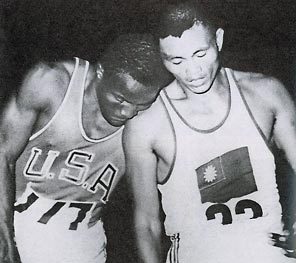1960 Olympic Decathlon: A Duel For The Ages 11

The decathlon duel between Rafer Johnson and C.K. Yang was the highlight of a star studded 1960 Olympics.
The decathlon is one of the most grueling competitions in all of sport. It consists of ten events, negotiated over two days. Points are awarded based on the order of finish as well as the distance, height or time achieved in each event. Final standings in a decathlon competition are therefore expressed as total accumulated points.
The particular events are designed to test the athlete’s speed, strength and endurance – in essence, an entire track meet in one competition. Because of the versatility and overall athleticism required to win, the Olympic decathlon champion is often referred to as the “World’s Greatest Athlete”.
This is the story of one of the most dramatic battles for that coveted distinction. As you will read, this struggle for gold and glory carried with it some very interesting under currents.
The 1960 Rome Olympics was one of the most memorable in terms of drama, future legends and athletic achievement in all of modern Olympic history. Names like Cassius Clay (Muhammad Ali), Wilma Rudolph, Al Oerter and the Russian sisters Irina and Tamara Press were but a few of the jewels set in the crown of Rome that year.
Among the gathered elite, probably none drew more attention than the top two decathletes in the world at that time: Yang Chuan-Kwang of Formosa (Taiwan) and the American world record holder, Rafer Johnson.
The decathlon in those days had worldwide appeal, due primarily to its dominance during the 1950s by Bob Mathias, who shocked the world by winning the 1948 Olympic gold as a 17 year old kid.
Yang, better known as C.K.Yang, was a member of the Takasago – an aboriginal tribe who inhabited Formosa long before the Chinese arrived. His athletic skill was recognized at an early age. He developed his art to the extent local facilities and competition would permit. He was good enough to finish eighth in the decathlon at the 1956 Melbourne Games. Eventually, track and field officials raised enough money to send him to the U.S. to train.



